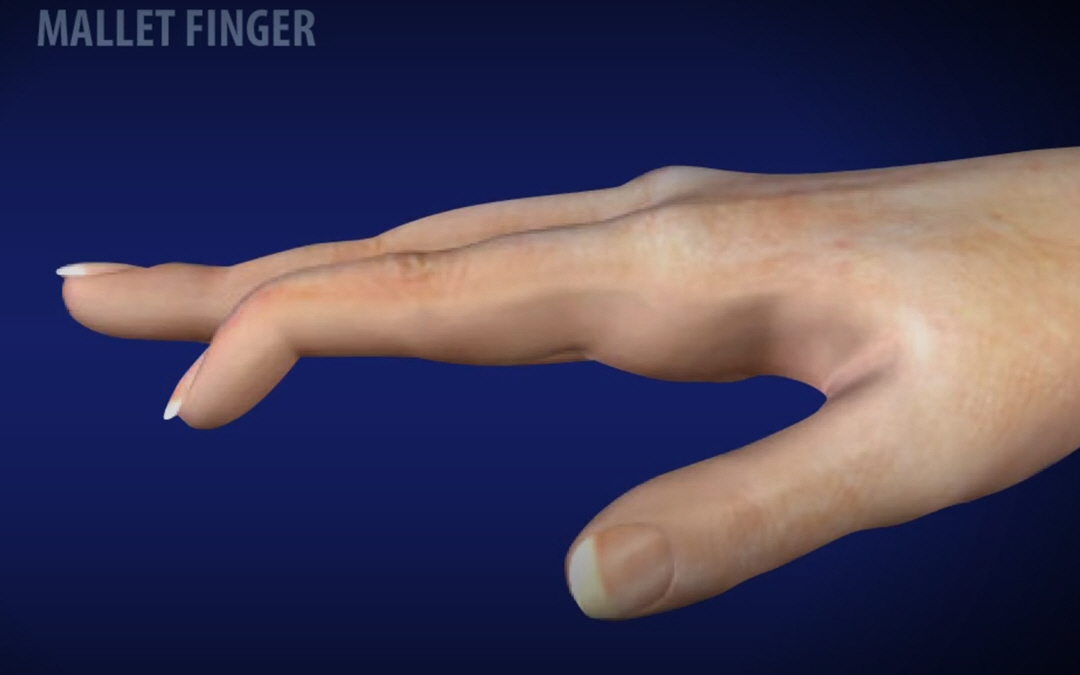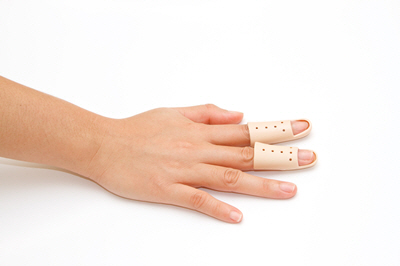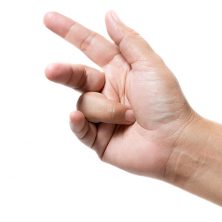A mallet finger injury is when the tendon that straightens your finger (the extensor tendon) is damaged.
This can happen when a ball or other object strikes the tip of your finger or thumb, and forcibly bends or ‘jams’ it. This force tears the tendon, causing a droop.
WATCH THIS SHORT VIDEO TO LEARN MORE!
It’s important for you to know which type of mallet finger injury you have. Did you know there are 2 types of mallet finger injuries?
1. Bony mallet finger
The bony mallet finger is when you actually avulse a piece of the bone off, so it’s kind of like a fracture but your tendon pulled a small piece of the bone off with it.
This is usually the better of the two because bone heals better to bone and usually you wear your splint for about six weeks while the bone heals. Your doctor will take an x-ray to determine if you a bony mallet finger (or thumb) injury.
As long as you wear your splint according to your doctor or hand therapist, are splinted in the correct position, and rehabilitate with progressive exercises you more than likely will have normal function of your finger.
2. Tendinous mallet finger
This is when the tendon is completely pulled off the bone, so your healing tendon to bone which is a lot harder to do.
With this type of mallet finger, you often have to wear your splint for 8 weeks. With this type of mallet finger, it is SO important to be VERY compliant with wearing your splint.
Sometimes with a tendinous mallet finger, you can develop what is called a swan neck deformity. This requires a special type of finger splinting with the middle joint included.
If this is not caught early on and only the tip of your finger is splinted, then it will not heal. You will be left frustrated spending weeks in a splint that did nothing for your finger. Your doctor will be able to give you the correct diagnose you. To find a hand surgeon near you click here.
It’s important to make an appointment with a hand surgeon so they can take an x-ray to determine your mallet finger injury type.
The time you wear your splint, and your rehabilitation recovery is greatly affected by your type of mallet finger injury.
A Mallet Finger Injury can be the most annoying little injury!
It can take a long time heal, and can be very complicated to treat. Mallet finger injuries are a pain because you have to wear a splint 24/7 and often times people will just give up. They won’t follow directions for wearing the mallet finger splint. Honestly, if you choose to do that then you will have a droopy finger for the rest of your life.
This means you have to be splinted ALL THE TIME- sleeping, eating, showering, working, playing golf, etc., ALL day and night. You can only remove it to check your skin BUT you have to keep the tip of the finger (or thumb) straight. Check out our blog post on how to apply and remove a mallet finger splint here.
Occasionally, even if you try splinting, you may still end up with a droopy finger. The droop may be minor. Perhaps about 10 degrees of lost extension; this is usually not enough to affect your hand function.
However, there are times when a 30 -40 degree droop can still occur, meaning all that time spent in a splint was unsuccessful. When this happens, surgery may be your only other option. Although not necessary, IF you can live with your finger permanently drooped.
Don’t want a droopy finger?
Get
Mallet Finger On Demand: A Simple Self Treatment Program
YES! I want to learn more
If you have found this article helpful, do us a favor and share on our social media channels!






